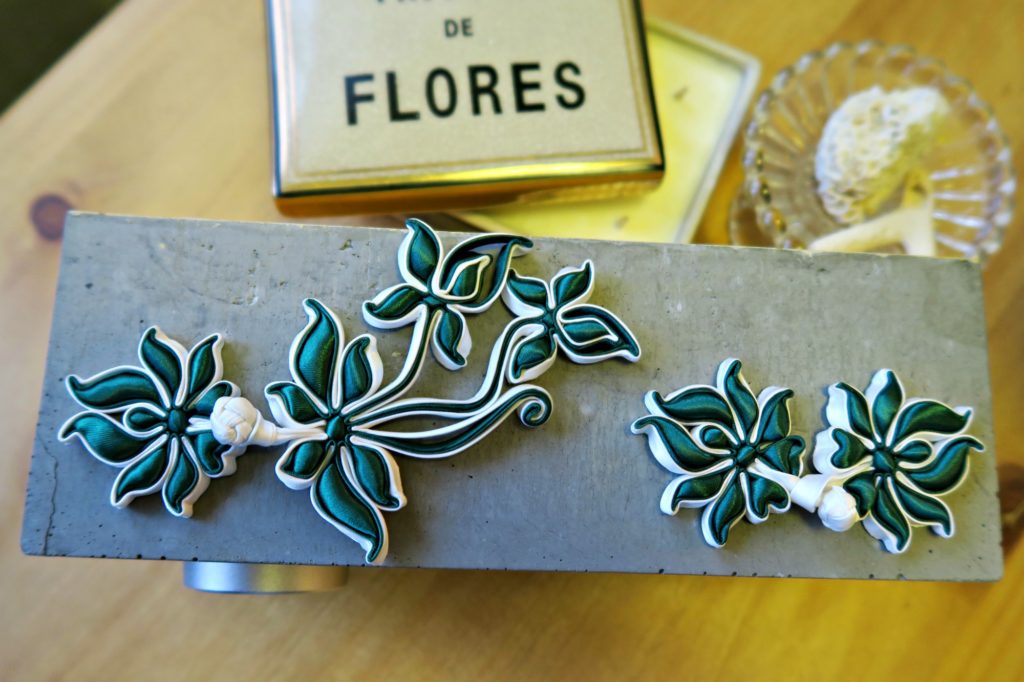
My favourite pankou out of the collection in this post. Such a beautiful forest green with white.
The Pankou is the name of this website, and as I’ve mentioned in some of my other posts, it is the Chinese name for the traditional knotted buttons used on qipaos (or in Cantonese cheongsam).
I chose it because, well, it’s a name relatively easy to pronounce and remember (this cannot be said of many other Chinese words!), but also because the pankou has a long history, and is an art form in itself.
Since the pankou is an important part of both this website and the qipao, I felt a dedicated post was somewhat overdue. So, without much further ado, here it is –
The Pankou, a traditional knotted button
As I wrote in my mini series on the history of the qipao (see part I on the Qing dynasty), prior to the Qing dynasty Chinese robes were mostly belted. It wasn’t until the Manchurians introduced qipaos that the pankou was introduced, and from then on it remained a staple of Chinese clothing for both men and women. You will also find pankous in the traditional Vietnamese Ao Dai and Korean Hanbok as it spread all across the region during this period of time.
Traditionally, the highest set of pankous on a qipao is at the base of the collar, and then they extend diagonally down the chest area, all the way down the left side of the body, with the last one just above the side opening, holding the whole dress together. With a zip-up, usually the pankous are only placed in the neck and chest area, with maybe one other above the slits for decoration.
Pankou ribbons
The “truest” pankou, or the pankou that you might expect to see on a formal silk qipao, is made from the silk of the dress itself. The tailor would cut a narrow strip of material on a bias (45 degree angle from the edges), apply glue to it, stitch it, and then turn the tube inside out so that the edging is hidden on the inside. A stiffening material such as copper wiring or a thick cotton thread is inserted, and then the whole thing pressed so that a narrow, flat ribbon of approximately 5mm is formed. The stiffening material through the inside allows the ribbon to be easily manipulated and helps to hold the final shape. This is the starting material for the pankou.
Since I don’t really have the finesse of skill to make this myself, and could not find such a high quality starting material online, I purchased a few rolls of a cheaper alternative as an illustration. But notice how the stitching is visible on the outside of these.
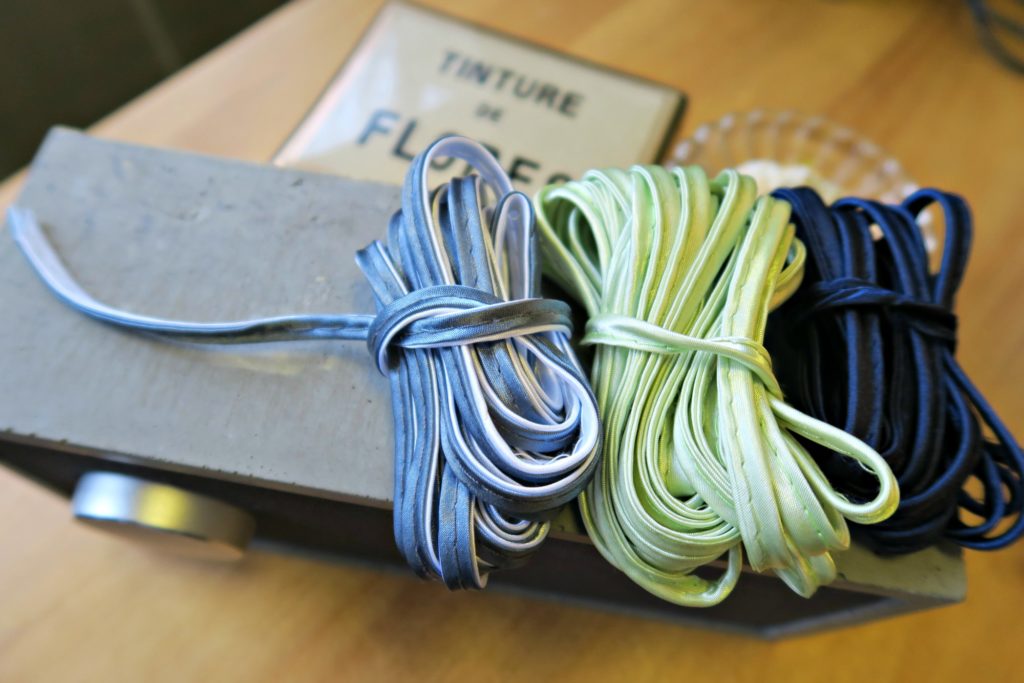
The straight pankou
The simplest and most common pankous are the straight pankous (直盘扣/直盤扣, or一字扣). This is what is on the majority of qipaos nowadays, and consists of a knot on the one side, and a looped ribbon on the other side to push the knot through.
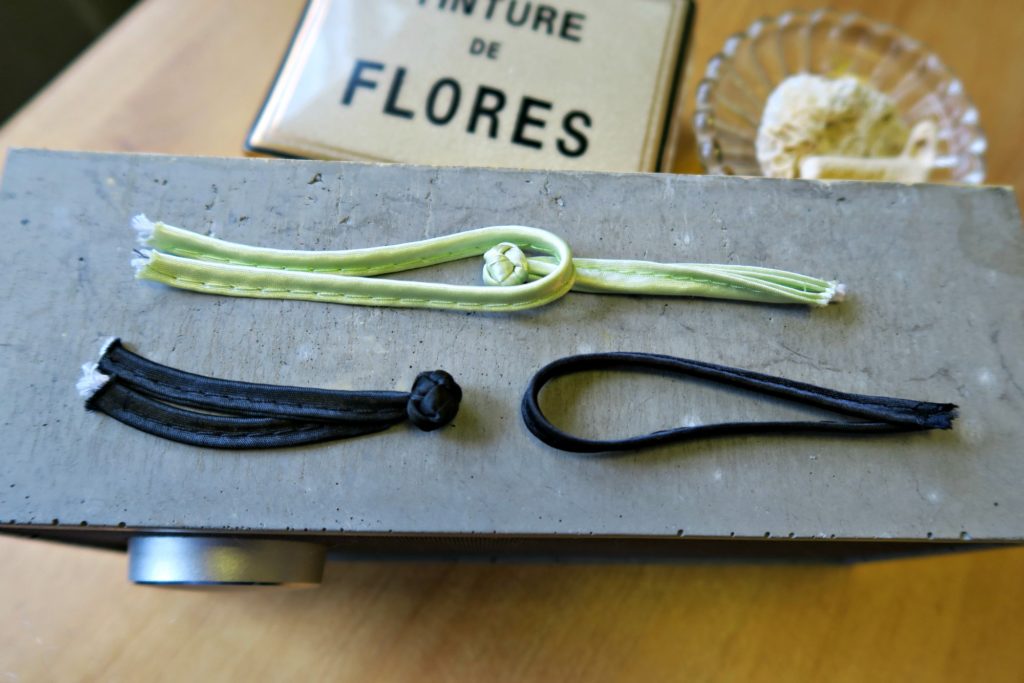
There are variations to the knotted version, where beads of all different materials can be used as a substitute for the knot. I like the green of these –
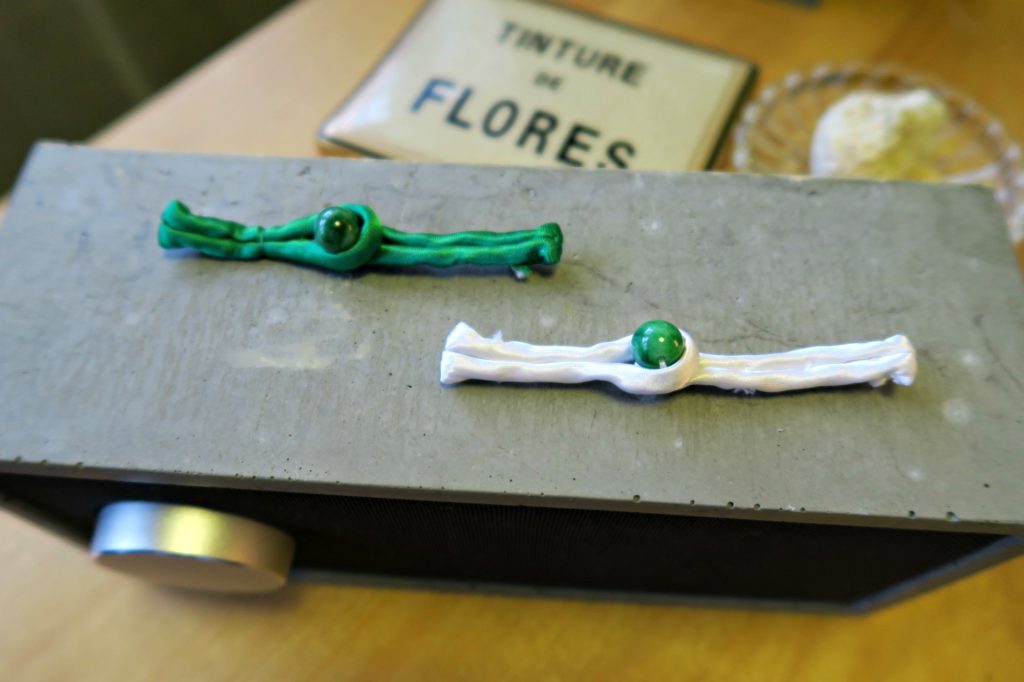
Simple floral pankous
Anything more ornate than a straight pankou is called a floral pankou (襻花盘扣/襻花盤扣) , there are many variations of these, ranging from the very simple to the extremely complex. There are also specific names given to some of these based on their shape like butterfly pankou (蝴蝶扣), or kumquat pankou (琵琶扣), but there are so many variations which do not fit into a specific shape that I’ll just stick with the generic floral pankou name.
The picture below shows some fairly common simple floral pankous.
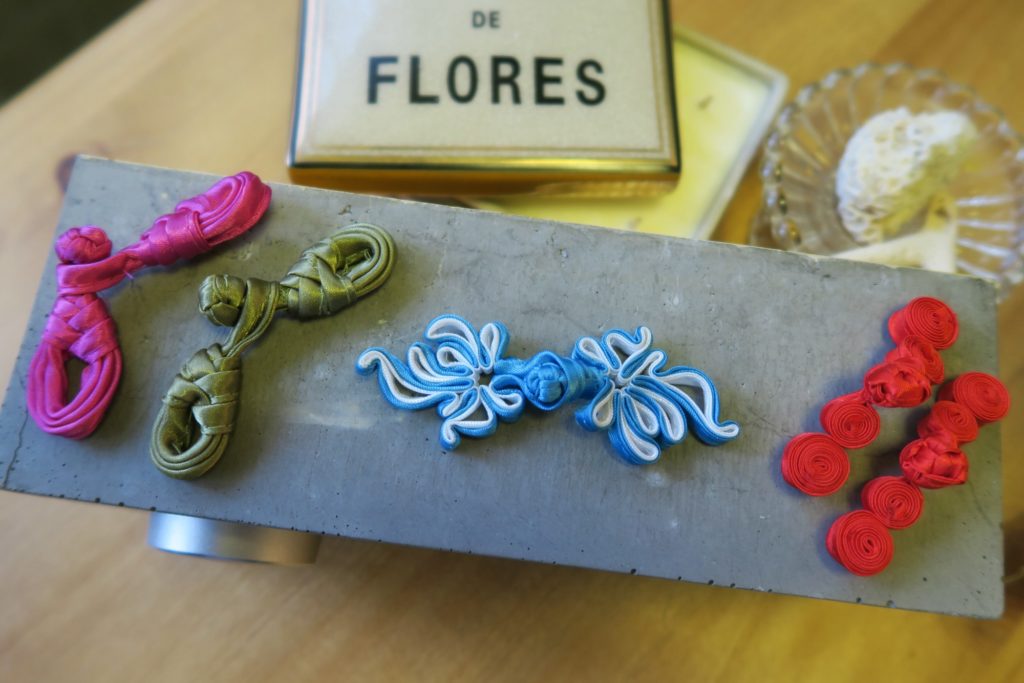
Different pankou materials
Pankous can also be made from many different materials to complement the qipao. Here are some examples of pankous made from colourful cotton –
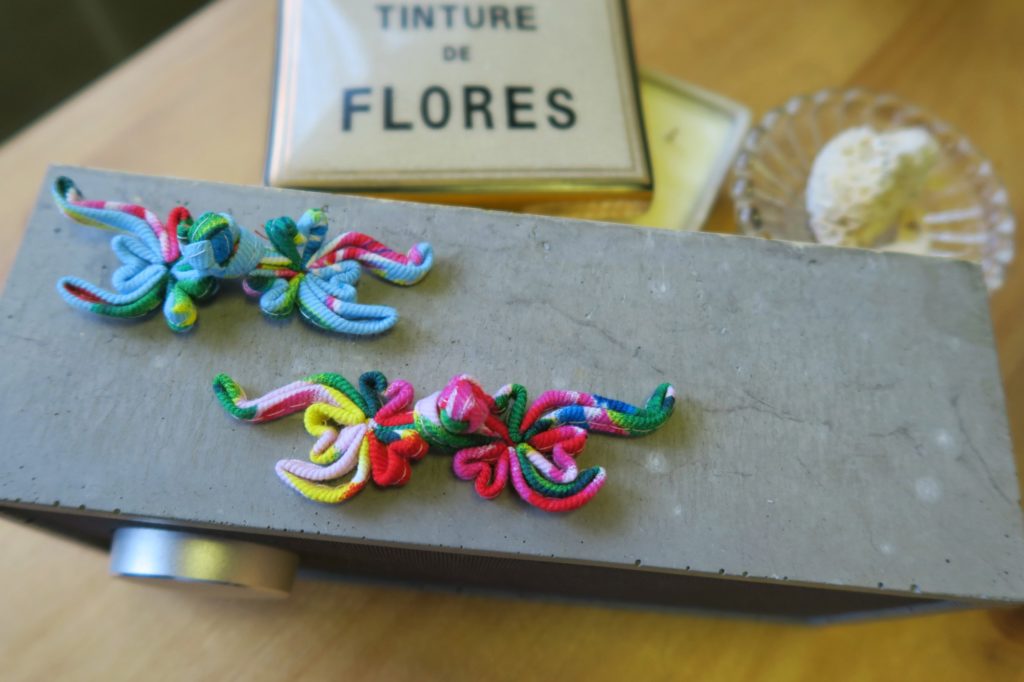
And here are some made from different synthetic weaving roping and some with added beads. I didn’t think I would like these much when I ordered a sample, but they are surprisingly demure and elegant.
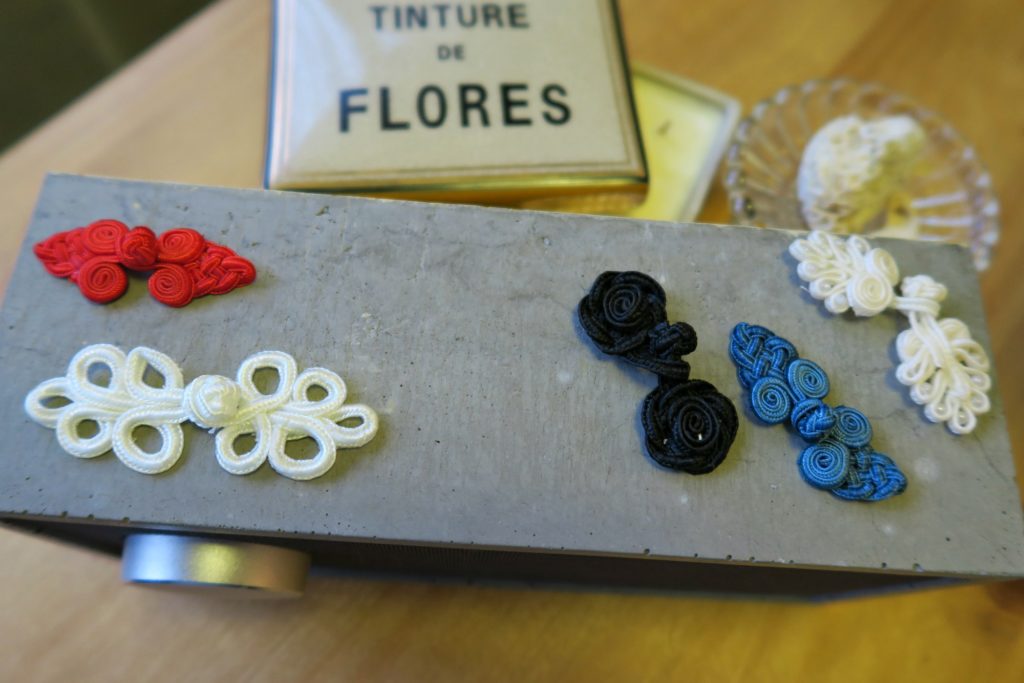
The really elaborate stuff
Remember when I mentioned that the designs can get very complex? Well here are 3 examples. The first is something you might find on a wedding qipao – red, gold and very auspicious looking. It has its own charm –
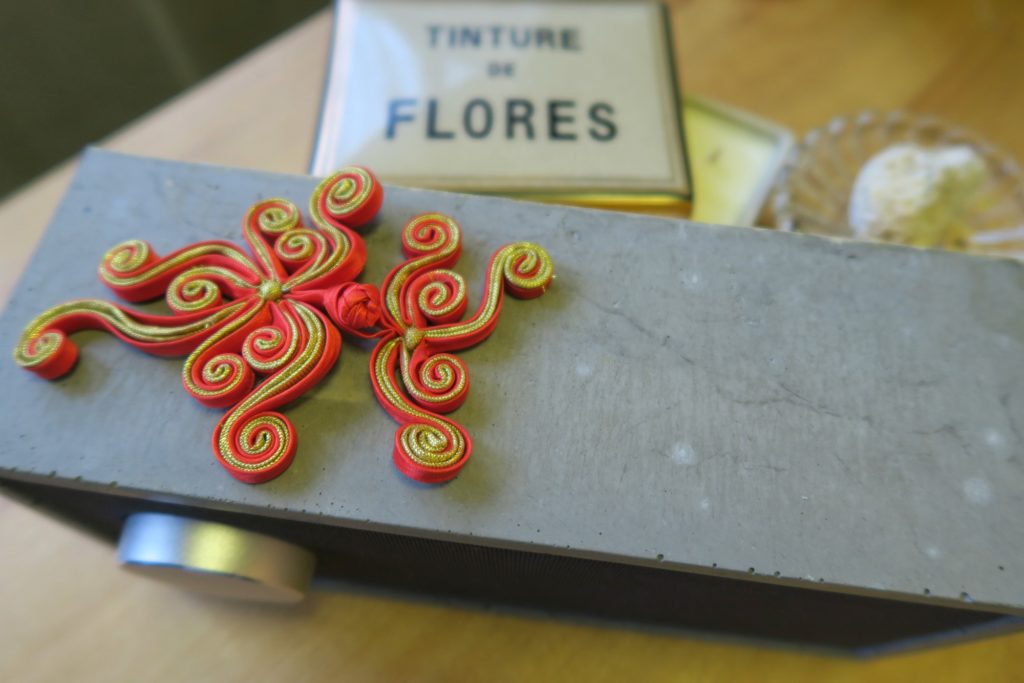
The second is this gorgeous black and royal blue set, they make such a statement with their chrysanthemum centre and winged sides. I would put this on a simple light blue cotton qipao so that they can get all the attention they deserve.
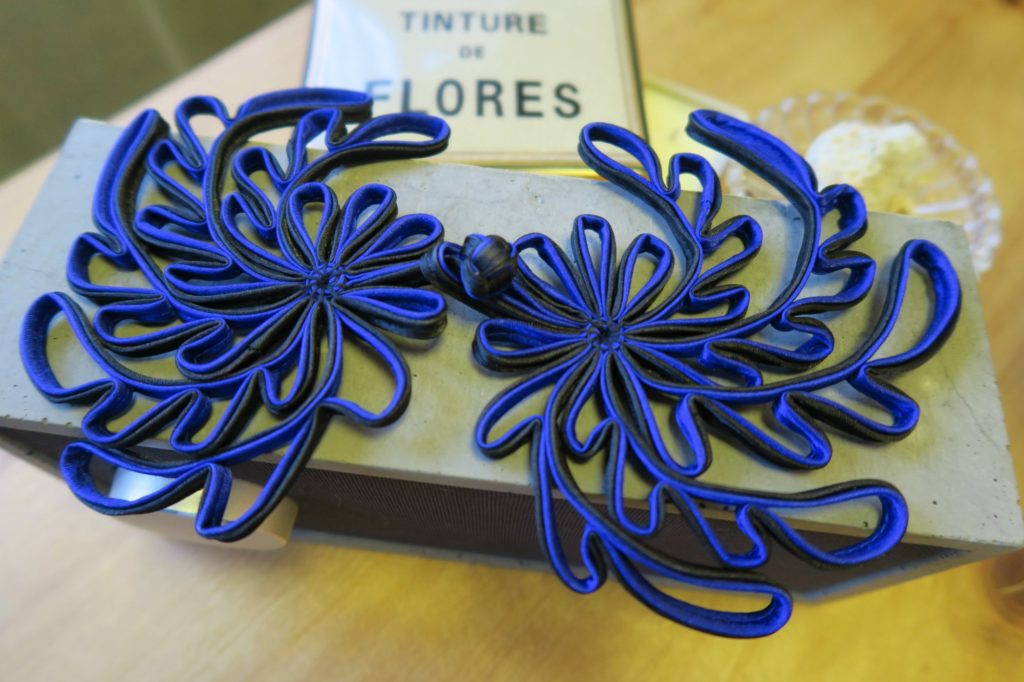
And the last is my very favourite one of the whole lot, this beautiful forest green and white double satin double set. It is a unique type of floral pankou where the centre is filled with stuffed material (嵌芯襻花盤扣). The set consists of a smaller symmetrical pair, which is used for base of the collar, and a large unsymmetrical pair, which is used for the diagonal of the chest.
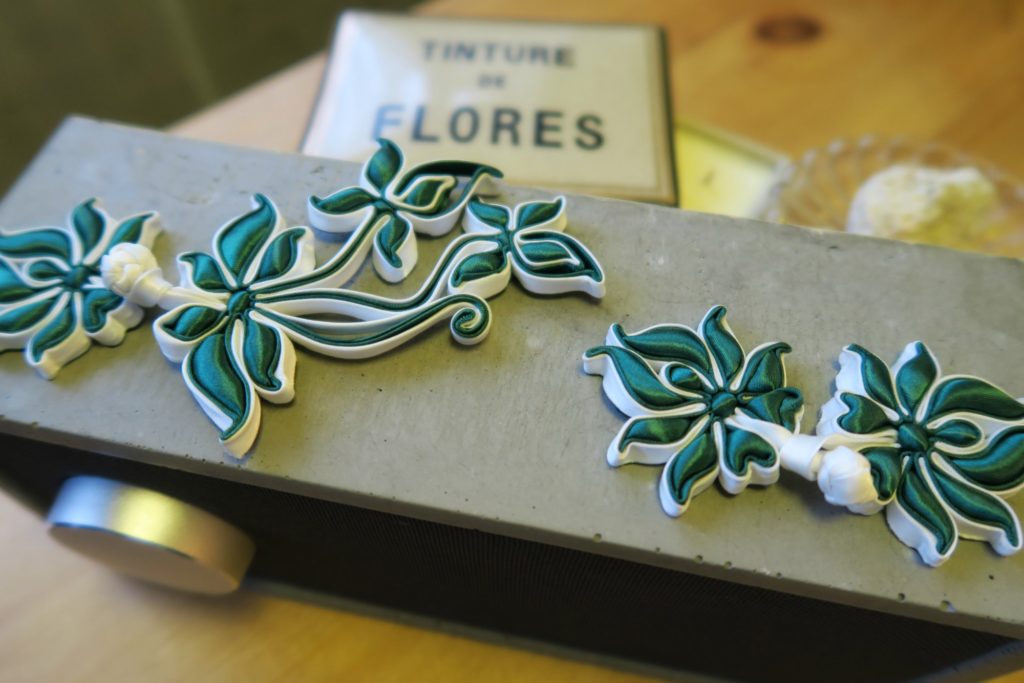
Now that I am left with a big collection of these pankous after this post, I’ll have to see what qipaos I’ll have made up next summer after the baby comes out! Stay tuned.
I like to learn making these beautiful flower buttons. Is there any tutorial offer on youtube?
Hi Sandy,
Yes, there are definitely videos you can watch. This is a video of the basic knot, and if you are interested in others it seems the same channel has a range of tutorials 🙂
Good luck!
https://www.youtube.com/watch?v=dtmjKYw4Aqs